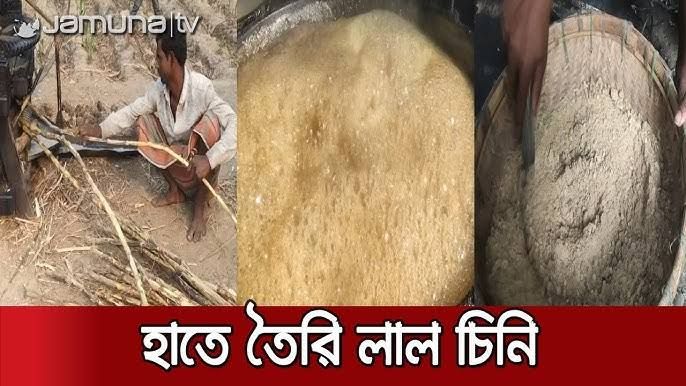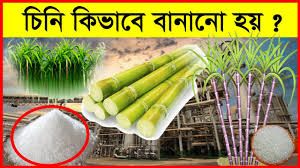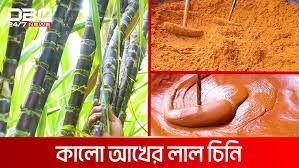
Bismillaher Rahmanir Rahim.
Assalamu Alaikum Wa Rahmatullahi Wa Barakatuhu
Dear Companions Today I want to share with you some words about the evils of killing foetuses.Welcom to this post and congratulations to all
Sugar production in China is an essential process, as sugar is a staple ingredient in Chinese cuisine, cultural rituals, and traditional medicine. The country mainly produces two types of sugar: cane sugar and beet sugar. Here’s a detailed look at the entire process, from raw material to the final product.
- Sources of Sugar in China
Sugar is produced primarily from two crops:
Sugarcane: This tropical crop is primarily grown in southern China, with Guangxi, Guangdong, and Yunnan being the leading regions for sugarcane cultivation.
Sugar Beets: This crop is mainly cultivated in the northern parts of China, particularly in Inner Mongolia, Xinjiang, and Heilongjiang, where the cooler climate is suitable.
- Sugar Production Process
The process of sugar production in China involves multiple steps, from harvesting to refining. Although the processes for sugarcane and sugar beet differ slightly due to the nature of the raw material, both follow a similar general structure:

source
Step 1: Harvesting
Sugarcane: Typically harvested manually or with the help of specialized equipment, sugarcane stalks are cut and transported to processing plants.
Sugar Beets: Harvested in autumn, sugar beets are collected by machines, cleaned to remove soil and other impurities, and transported for processing.
Step 2: Cleaning and Preparation
Once at the processing facility, sugarcane or sugar beets go through an initial cleaning process. Dirt, leaves, and other impurities are removed to prepare the crops for juice extraction. Sugarcane is cut into smaller pieces for easier milling, while sugar beets are sliced into thin strips called "cossettes" to facilitate juice extraction.
Step 3: Juice Extraction
Milling (Sugarcane): Sugarcane goes through a series of mills where it is crushed to extract the juice. The process is often aided by adding water, which increases juice yield.
Diffusion (Sugar Beets): For sugar beets, a diffusion process is used, where sliced beet cossettes are soaked in hot water to extract the sugar.
Step 4: Clarification
The raw juice from both sugarcane and sugar beets is cloudy and contains various impurities. To remove these, the juice undergoes a clarification process:

source
Heating and Liming: The juice is heated and treated with lime (calcium hydroxide) to help neutralize acids and improve purity.
Settling and Filtration: The treated juice is allowed to settle, and impurities form a thick sludge that can be filtered out. This results in a clear juice that is ready for concentration.
Step 5: Concentration and Crystallization
The clarified juice contains around 15% sugar. This concentration is increased through evaporation:
Evaporation: The juice is boiled in multiple evaporator stages to reduce the water content, yielding a concentrated syrup with approximately 60-65% sugar.
Crystallization: The syrup is further boiled to induce sugar crystallization. During this stage, sugar crystals start forming and are separated from the syrup.
Step 6: Separation and Drying
After crystallization, the mixture of crystals and syrup (molasses) is spun in a centrifuge to separate the crystals. The sugar crystals are then dried to reduce moisture content, producing raw sugar that is ready for refining.
- Refining Process
Raw sugar is often refined to produce the white, granulated sugar used in households and industries. The refining process involves:

source
Melting: Raw sugar is dissolved in water to create a syrup that can be purified.
Carbonation or Phosphatation: The syrup is treated to remove color impurities. Carbonation adds carbon dioxide and lime, while phosphatation uses phosphate salts. Both methods clarify the syrup.
Filtration and Bleaching: The syrup is filtered again and treated with bleaching agents (e.g., sulfur dioxide) to achieve the desired white color.
Re-crystallization: The purified syrup undergoes a second crystallization, resulting in refined white sugar.
- By-Products and Environmental Impact
The sugar production process yields by-products, including molasses, bagasse (fiber residue from sugarcane), and beet pulp:

source
Molasses: A dark, thick syrup used in the food industry and for fermentation in alcohol production.
Bagasse: Often used as fuel in boilers or converted into biofuels.
Beet Pulp: Used as livestock feed or processed into other products.
Environmental Considerations
The production of sugar, especially from sugarcane, requires significant water resources and energy. China has made strides in improving water and energy efficiency in its sugar industry, using technologies like:
Recycling Wastewater: Treating and reusing water within the facility.
Bagasse-Fueled Power Generation: Using bagasse for power generation reduces reliance on external energy sources.
Challenges in China's Sugar Industry
China's sugar industry faces challenges such as high production costs, climate impact, and competition from imported sugar. The government has implemented subsidies and encouraged technological upgrades to improve efficiency and competitiveness.
source
Sugar production in China, predominantly from sugarcane and sugar beet, involves intricate processes of extraction, clarification, and refining. The industry is both crucial and challenging, balancing the demand for sugar with environmental concerns and economic pressures.

Your post after many days is still appreciated by blurt users.
Post has received 1 additional community votes in the past 7 days. Reward from this comment will be credited to your account to additionally support your work!
You can check post ranking on https://blurt.pl/en/promo.php
if you want to support others by this tool just vote on any article you like at any time no matter when it was publish. Help dig up good content from the depths of the Blurt network and reward good authors! :)